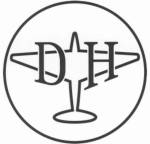
Hornet
The de Havilland Hornet is basically a scaled down Mosquito using "cleaned up" Merlin engines with a smaller frontal area than the normal Merlin engine. Proposed by de Havilland it initially met with little support from the Air Ministry but the need for two engine dependability and long range in the Pacific theater made the aircraft more attractive especially considering it was a scaled down version of a proven design and would be easy to build with few unknown problems. Three prototypes were ordered in July of 1943 with the first one flying in July of 1944. It was decided to order production models off the board to expedite production and the first of an order of sixty came off the line in February for 1945. In an effort to reduce the weathering problems suffered by the Mosquito de Haviland introduced a technique of bonding metal to wood. It was used on the Hornet in making composite spars for the wings and it was the first time the process had been used in an aircraft. Unfortunately the Hornet arrived on the scene too late to see service in WWII
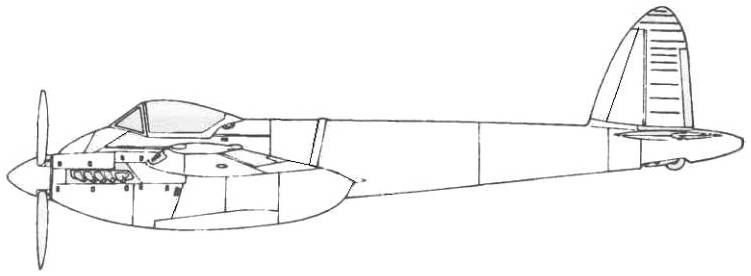
The Kit
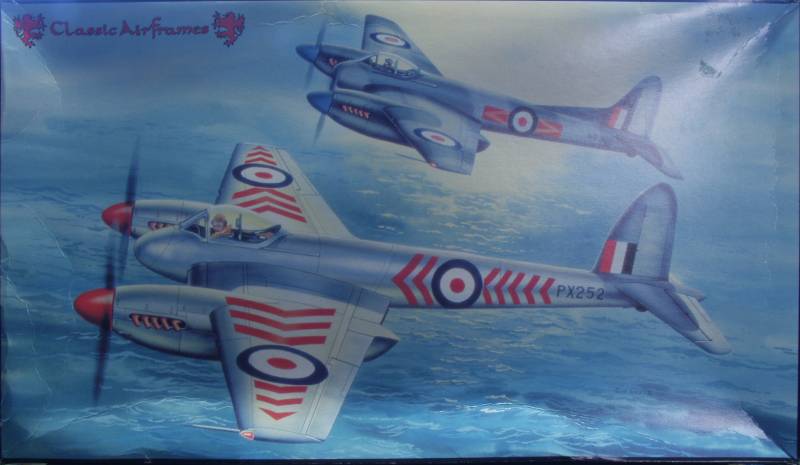
The Classic Airframes kit comes in a fairly typical box for Classic Airframes, a two part top open box of fairly thin card board with a nice rendition of a Hornet on the top. Inside the box is one large bag containing three sprues of gray injection molded parts. There is a small bag containing resin parts and the clear vacuform parts were loose in the box. The injection molded parts have a smooth matte finish and have only a small amount of flash. Bette in this respect than many of their other kits. The sprue attachment points are heavy enough that care needs to be taken removing them from the sprues. The kit features recessed panel lines and surface detail. Looking over the air frame parts I found no surface defects. There are some ejector towers that will need to be removed before assembling the wings and tail surfaces. This kit provides parts to build either the Hornet or the navalized version the Sea Hornet. As a the fin is molded separate from the fuselage and parts for two different fins and two different lengths of horizontal tail surfaces are supplied. There are no ejector pin marks that will show on the balance of the parts but a couple ejector towers will need to be removed in the cockpit area to allow the cockpit tub to fit. The balance of the small parts have relatively little flash compared to most limited run kits and even the mold parting marks are light and not much worse than most main stream kits. The propellers have separate blades and under wing racks are supplied but there is no ordinance to attach to them. The wheel wells are partially enclosed but contain no detail structural or otherwise.There are 63 parts molded in gray by my count but as many as 15 of these won't be used depending on what version you chose to build. See below.
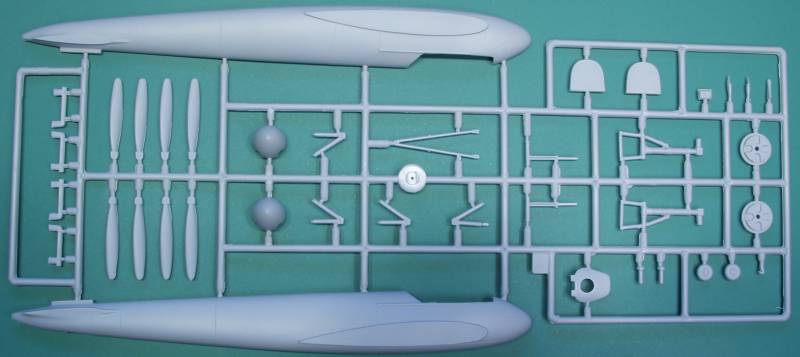
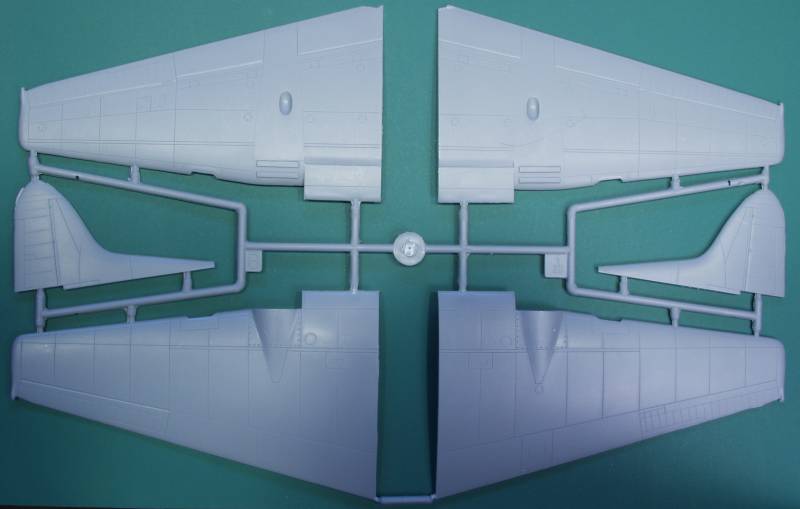
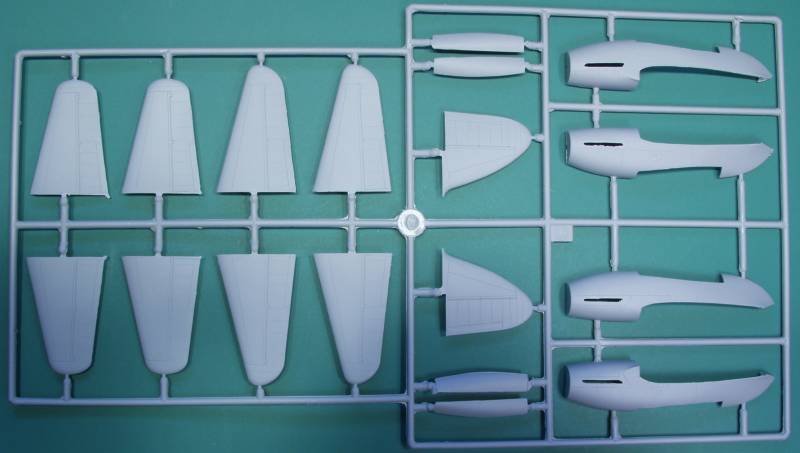
The resin parts are molded in a tan colored resin and are crisply molded with no short shots or visible pin holes. The parts include the cockpit floor and rear shelf, cockpit side walls, control stick, two under wing racks, exhaust stacks which have a hollowed ends, instrument panel, tail wheel strut and tail wheel bay, wing radiators, wheels and tires which are not weighted, and a few parts listed as being used on the night fighter version which can't be built from this kit. All together there are 33 parts in resin. See below.

The clear parts are vacuformed and are clear and reasonably distortion free. The frame lines are a bit soft but two are supplied in case one comes to grief. See below.
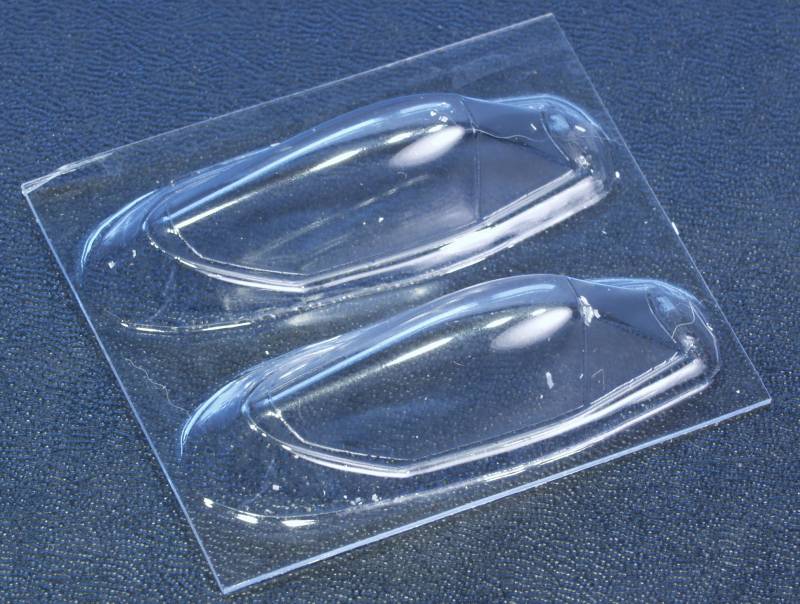
The decals are thin with minimal clear film and should be quite excellent as they are from Microscale. Markings are supplied for two aircraft, one for an F.1 version and one for an F.3. No stenciling is supplied. See below.
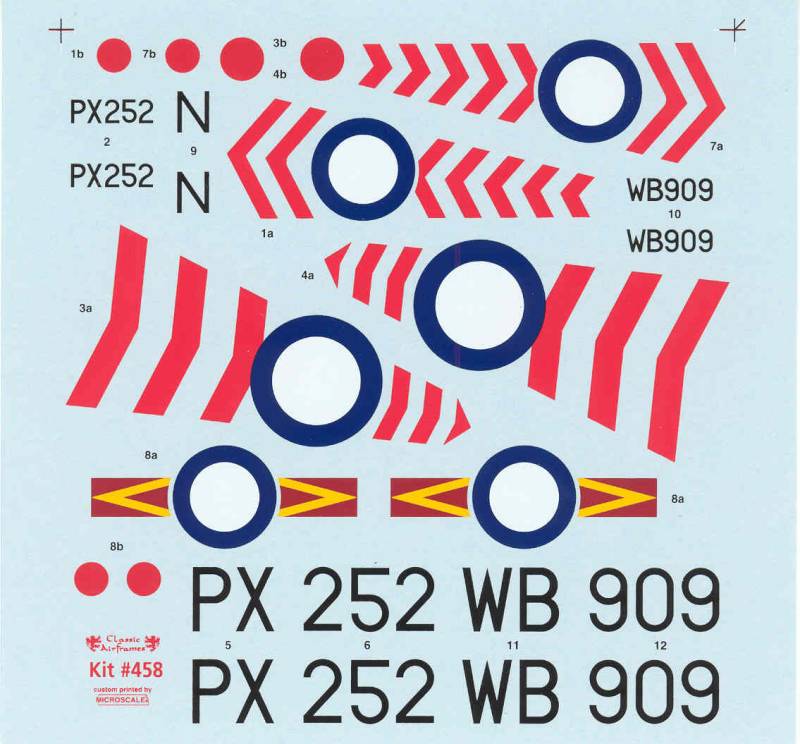
The instructions are typical CA, two A4 size sheets folded to create 8 panels. The front panel has aircraft history and specifications, the second and part of the third have the usual icon chart, a parts map. The clear parts shown on the parts map apparently are for the night fighter version and do not match what is provided in the kit. The balance of the panels are assembly steps, There is a separate A4 sheet printed on one side which has painting and marking instructions.
After Market Goodies
None that I am aware of.
Conclusions
This is another nice kit from Classic Airframes of another less well know yet significant aircraft that has been ignored by the mainstream kit producers. Reviews indicate that the cockpit fit is quite tight so care is in order to remove material as required to insure it fits before attempting to close the fuselage. It appears quality wise to be one of CA's better efforts and should not cause any major problems for builders with a few multimedia short run kits under their belts. Recommended !
Links to kit build or reviews
A build / review can be found here and here.
References
Warpaint Series No. 19, de Havilland Hornet and Sea Hornet by Tony Buttler